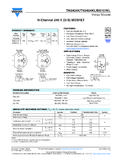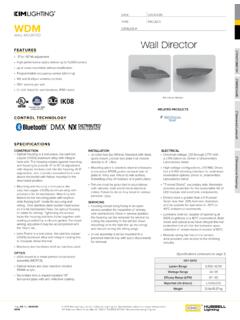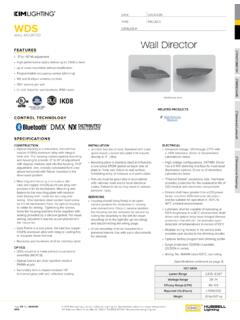Transcription of Kl übersynth UH1 14-151 - asf-bauer.de
1 SAFETY DATA SHEET according to Regulation (EC) No. 1907/2006 - DE Kl bersynth UH1 14-151 Version Revision Date Print Date 1 / 16 1. Identification of the substance/mixture and of the company/undertaking Product identifier Product name : Kl bersynth UH1 14-151 Article-No. : 096037 Relevant identified uses of the substance or mixture and uses advised against Use of the Substance/Mixture : Grease Recommended restrictions on use : Restricted to professional users. Details of the supplier of the safety data sheet Kl ber Lubrication M nchen Geisenhausenerstr. 7 81379 M nchen Deutschland Tel: +49 (0) 89 7876 0 Fax: +49 (0) 89 7876 333 E-mail address Responsible/issuing person : Material Compliance Management National contact : Kl ber Lubrication Deutschland Geisenhausenerstra e 7 81379 M nchen Deutschland Tel.: +49 89 7876 0 Fax: +49 89 7876 565 Emergency telephone number +49 89 7876 700 (24 hrs) 2.
2 Hazards identification Classification of the substance or mixture Classification (REGULATION (EC) No 1272/2008) Chronic aquatic toxicity, Category 3 H412: Harmful to aquatic life with long lasting effects. Classification (67/548/EEC, 1999/45/EC) Dangerous for the environment R51/53: Toxic to aquatic organisms, may cause long-term adverse effects in the aquatic environment. SAFETY DATA SHEET according to Regulation (EC) No. 1907/2006 - DE Kl bersynth UH1 14-151 Version Revision Date Print Date 2 / 16 Label elements Labelling (REGULATION (EC) No 1272/2008) Hazard statements : H412 Harmful to aquatic life with long lasting effects. Precautionary statements : Prevention: P273 Avoid release to the environment. Other hazards 3. Composition/information on ingredients Mixtures Chemical nature : Synthetic hydrocarbon oil aluminium complex soap Hazardous components Chemical Name CAS-No.
3 EC-No. Index-No. Registration number Classification (67/548/EEC) Classification (REGULATION (EC) No 1272/2008) Concentration [%] 2,6-di-tert-butyl-p-cresol 128-37-0 204-881-4 / 01-2119555270-46-XXXX N; R50/53 Aquatic Acute 1; H400 Aquatic Chronic 1; H410 >= 0,25 - < 1 2-(2-heptadec-8-enyl-2-imidazolin-1-yl)ethanol 95-38-5 202-414-9 Xn; R22-R48/22 C; R34 N; R50/53 Acute Tox. 4; H302 Skin Corr. 1C; H314 Eye Dam. 1; H318 STOT RE 2; H373 Aquatic Acute 1; H400 Aquatic Chronic 1; H410 >= 0,25 - < 1 (Z)-N-methyl-N-(1-oxo-9-octadecenyl)glycine 110-25-8 203-749-3 / 01-2119488991-20-XXXX Xn; R20 Xi; R38-R41 N; R50 Acute Tox. 4; H332 Skin Irrit. 2; H315 Eye Dam. 1; H318 Aquatic Acute 1; H400 >= 0,25 - < 1 For the full text of the R-phrases mentioned in this Section, see Section 16. For the full text of the H-Statements mentioned in this Section, see Section 16.
4 SAFETY DATA SHEET according to Regulation (EC) No. 1907/2006 - DE Kl bersynth UH1 14-151 Version Revision Date Print Date 3 / 16 4. First aid measures Description of first aid measures If inhaled : Remove person to fresh air. If signs/symptoms continue, get medical attention. Keep patient warm and at rest. If unconscious place in recovery position and seek medical advice. Keep respiratory tract clear. If breathing is irregular or stopped, administer artificial respiration. In case of skin contact : Take off all contaminated clothing immediately. Wash off immediately with soap and plenty of water. Get medical attention immediately if irritation develops and persists. Wash clothing before reuse. Thoroughly clean shoes before reuse. In case of eye contact : Rinse immediately with plenty of water, also under the eyelids, for at least 10 minutes.
5 If eye irritation persists, consult a specialist. If swallowed : Move the victim to fresh air. If unconscious place in recovery position and seek medical advice. Keep respiratory tract clear. Do not induce vomiting without medical advice. Never give anything by mouth to an unconscious person. Most important symptoms and effects, both acute and delayed Symptoms : No information available. Risks : None known. Indication of any immediate medical attention and special treatment needed Treatment : No information available. 5. Firefighting measures Extinguishing media Suitable extinguishing media : Use water spray, alcohol-resistant foam, dry chemical or carbon dioxide. Unsuitable extinguishing media : High volume water jet Special hazards arising from the substance or mixture Specific hazards during firefighting : Fire may cause evolution of: Carbon oxides Metal oxides SAFETY DATA SHEET according to Regulation (EC) No.
6 1907/2006 - DE Kl bersynth UH1 14-151 Version Revision Date Print Date 4 / 16 Nitrogen oxides (NOx) Oxides of phosphorus Advice for firefighters Special protective equipment for firefighters : In the event of fire, wear self-contained breathing apparatus. Use personal protective equipment. In the case of respirable dust and/or fumes, use self-contained breathing apparatus. Exposure to decomposition products may be a hazard to health. Further information : Standard procedure for chemical fires. Collect contaminated fire extinguishing water separately. This must not be discharged into drains. 6. Accidental release measures Personal precautions, protective equipment and emergency procedures Personal precautions : Evacuate personnel to safe areas. Use the indicated respiratory protection if the occupational exposure limit is exceeded and/or in case of product release (dust).
7 Avoid breathing dust. Refer to protective measures listed in sections 7 and 8. Environmental precautions Environmental precautions : Do not allow contact with soil, surface or ground water. If the product contaminates rivers and lakes or drains inform respective authorities. Methods and materials for containment and cleaning up Methods for cleaning up : Clean up promptly by sweeping or vacuum. Keep in suitable, closed containers for disposal. Reference to other sections For personal protection see section 8. 7. Handling and storage Precautions for safe handling Advice on safe handling : Avoid contact with skin and eyes. For personal protection see section 8. Smoking, eating and drinking should be prohibited in the application area. Wash hands and face before breaks and immediately after handling the product. Do not get in eyes or mouth or on skin.
8 Do not get on skin or clothing. Do not ingest. Do not repack. SAFETY DATA SHEET according to Regulation (EC) No. 1907/2006 - DE Kl bersynth UH1 14-151 Version Revision Date Print Date 5 / 16 These safety instructions also apply to empty packaging which may still contain product residues. Keep container closed when not in use. Conditions for safe storage, including any incompatibilities Requirements for storage areas and containers : Store in original container. Keep container closed when not in use. Keep in a dry, cool and well-ventilated place. Containers which are opened must be carefully resealed and kept upright to prevent leakage. Store in accordance with the particular national regulations. Keep in properly labelled containers. German storage class : 11 Combustible Solids Specific end use(s) : Consult the technical guidelines for the use of this substance/mixture.
9 8. Exposure controls/personal protection Control parameters Components CAS-No. Value type Control parameters Update Basis 2,6-di-tert-butyl-p-cresol 128-37-0 AGW 10 mg/m3 2012-09-13 DE TRGS 900 Further information: DFG: Senate commission for the review of compounds at the work place dangerous for the health (MAK-commission). Sum of vapor and aerosols. When there is compliance with the OEL and biological tolerance values, there is no risk of harming the unborn child DNEL 2,6-di-tert-butyl-p-cresol : End Use: Workers Exposure routes: Inhalation Potential health effects: Long-term systemic effects Value: 3,5 mg/m3 End Use: Workers Exposure routes: Skin contact Potential health effects: Long-term systemic effects Value: 0,5 mg/kg 2-(2-heptadec-8-enyl-2-imidazolin-1-yl)e thanol : End Use: Workers Exposure routes: Skin contact Potential health effects: Long-term exposure, Systemic effects Value: 0,6 mg/kg End Use: Workers SAFETY DATA SHEET according to Regulation (EC) No.
10 1907/2006 - DE Kl bersynth UH1 14-151 Version Revision Date Print Date 6 / 16 Exposure routes: Inhalation Potential health effects: Long-term exposure, Systemic effects Value: 0,46 mg/m3 End Use: Workers Exposure routes: Skin contact Potential health effects: Short-term exposure, Systemic effects Value: 2 mg/kg End Use: Workers Exposure routes: Inhalation Potential health effects: Short-term exposure, Systemic effects Value: 14 mg/m3 (Z)-N-methyl-N-(1-oxo-9-octadecenyl)glyc ine : End Use: Industrial use Exposure routes: Inhalation Potential health effects: Long-term systemic effects Value: 0,2 mg/m3 End Use: Industrial use Exposure routes: Inhalation Potential health effects: Acute systemic effects Value: 18 mg/m3 End Use: Industrial use Exposure routes: Inhalation Potential health effects: Long-term local effects Value: 0,01 mg/m3 End Use: Industrial use Exposure routes: Inhalation Potential health effects: Acute local effects Value: 18 mg/m3 End Use: Industrial use Exposure routes: Skin contact Potential health effects: Long-term systemic effects Value: 10 mg/kg End Use: Industrial use Exposure routes: Skin contact Potential health effects: Acute systemic effects Value: 100 mg/kg PNEC 2,6-di-tert-butyl-p-cresol : Fresh water Value: 0,199 g/l Marine water Value: 0,0199 g/l Intermittent use/release Value: 1,99 g/l Microbiological Activity in Sewage Treatment Systems SAFETY DATA SHEET according to Regulation (EC) No.
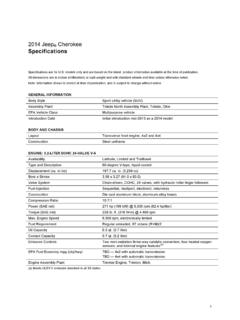

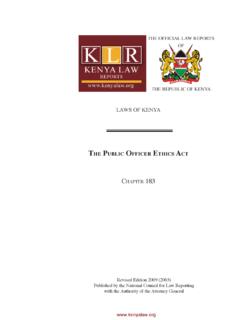
![SFPE Equation Sheet [KL 10-19-2015]](/cache/preview/c/f/3/c/2/1/e/4/thumb-cf3c21e48064d8fdafc6507dedc08886.jpg)
